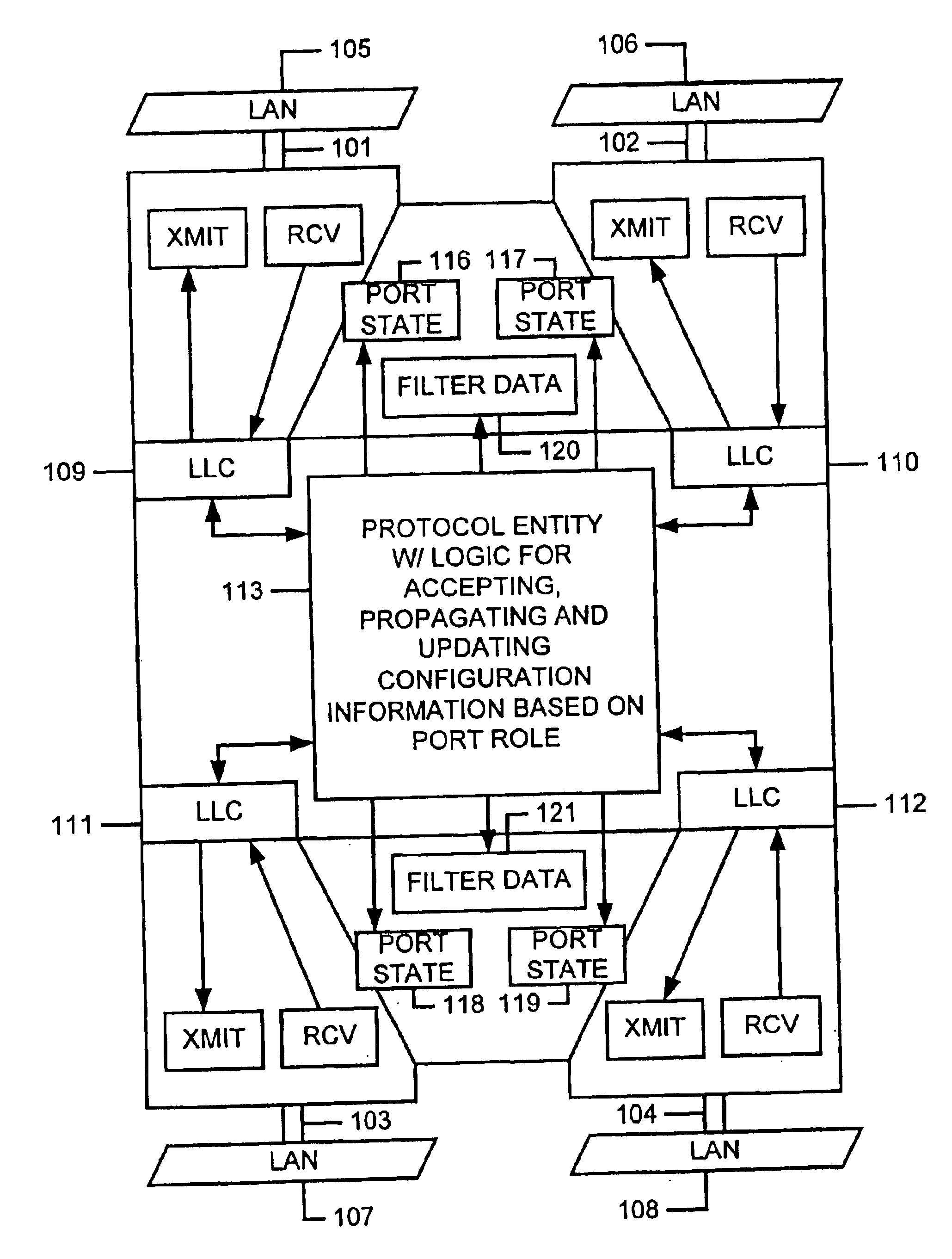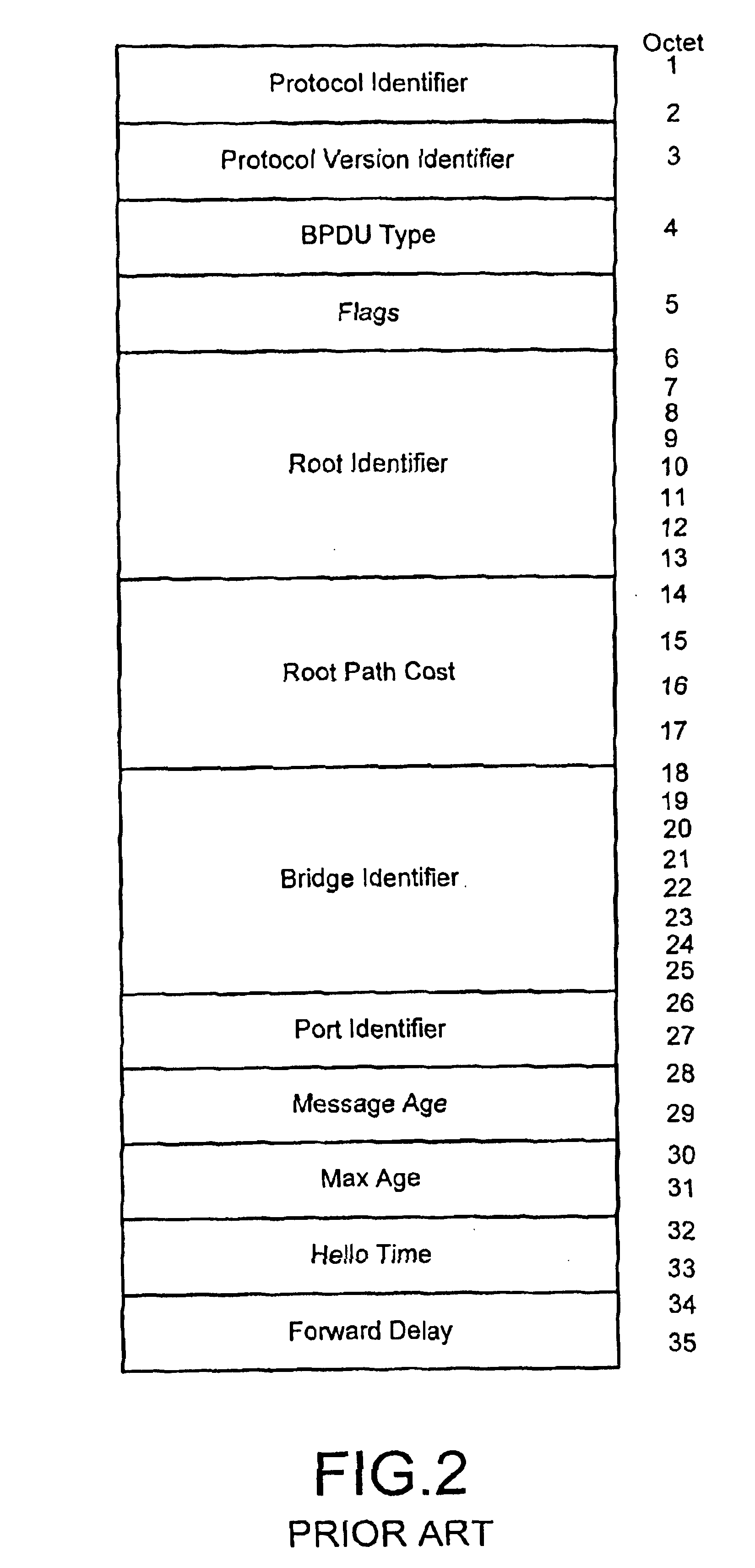Spanning tree with rapid propagation of topology changes
a topology change and tree branch technology, applied in the field of network protocols and network intermediate devices, can solve problems such as the processing of inferior information by protocol entities on bridges, and achieve the effect of quick propagation of bad news
- Summary
- Abstract
- Description
- Claims
- Application Information
AI Technical Summary
Benefits of technology
Problems solved by technology
Method used
Image
Examples
Embodiment Construction
[0034]A detailed description of the present invention is provided with respect to the figures, in which FIG. 1 provides a block diagram of the bridge functionality in the spanning tree entities, for example in the devices of FIG. 1. FIG. 1 is drawn in the style adapted in the IEEE 802.1D standard (See FIGS. 3-6 in the Standard), and is enhanced to provide four ports.
[0035]Thus, the bridge illustrated in FIG. 1 includes ports 101, 102, 103, and 104. Each of the ports 101-104 is coupled to a respective LAN segment 105-108. The ports support, transmit and receive functionality through respective logical link control layer entities 109-112. The LLC entities 109-112 provide for connection to bridge protocol entity 113 according to the present invention. The bridge protocol entity provides for storing parameters that identify port roles according to the present invention, and for managing transition of port state information, and for managing forwarding database entries for the plurality ...
PUM
 Login to View More
Login to View More Abstract
Description
Claims
Application Information
 Login to View More
Login to View More - R&D
- Intellectual Property
- Life Sciences
- Materials
- Tech Scout
- Unparalleled Data Quality
- Higher Quality Content
- 60% Fewer Hallucinations
Browse by: Latest US Patents, China's latest patents, Technical Efficacy Thesaurus, Application Domain, Technology Topic, Popular Technical Reports.
© 2025 PatSnap. All rights reserved.Legal|Privacy policy|Modern Slavery Act Transparency Statement|Sitemap|About US| Contact US: help@patsnap.com



